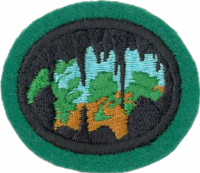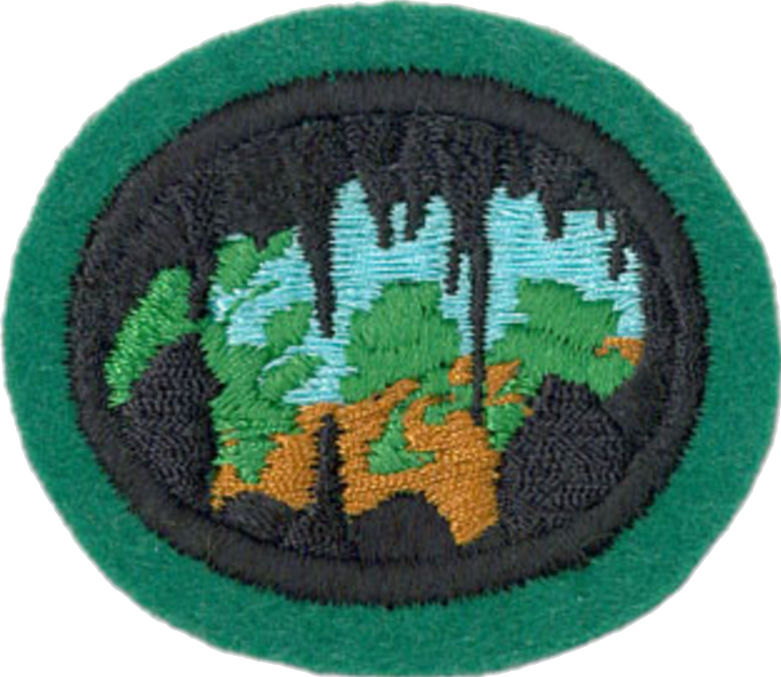Difference between revisions of "AY Honors/Caving/Answer Key"
m |
m (- Category of AYHAB) |
||
| (One intermediate revision by the same user not shown) | |||
| Line 175: | Line 175: | ||
===Cave Dwelling Animals=== <!--T:19--> | ===Cave Dwelling Animals=== <!--T:19--> | ||
*'''Troglobites''', which are restricted to caves | *'''Troglobites''', which are restricted to caves | ||
| − | :Flatworms, Isopods, Amphipods, Eyeless cave shrimp, cave crayfish, bristletails, collembola, eyeless fish, cave beetles | + | :Flatworms, Isopods, Amphipods, Eyeless cave shrimp, cave crayfish, bristletails, collembola, eyeless fish, cave beetles |
*'''Troglophiles''', which live in caves and on the surface | *'''Troglophiles''', which live in caves and on the surface | ||
:Segmented worms, snails, copepods, spiders, phalangids, mites, pseudoscorpions, millipedes, cave crickets(Hadenoecus) | :Segmented worms, snails, copepods, spiders, phalangids, mites, pseudoscorpions, millipedes, cave crickets(Hadenoecus) | ||
| Line 208: | Line 208: | ||
==Historical Note== <!--T:25--> | ==Historical Note== <!--T:25--> | ||
Unusually the honor token for Caving was changed to show the view out of a cave instead of a person on a rope. Watch sashes of long time Pathfinders for the old token design. | Unusually the honor token for Caving was changed to show the view out of a cave instead of a person on a rope. Watch sashes of long time Pathfinders for the old token design. | ||
| − | |||
<noinclude></translate></noinclude> | <noinclude></translate></noinclude> | ||
{{CloseHonorPage}} | {{CloseHonorPage}} | ||
Latest revision as of 19:21, 13 July 2022
1
All primary light sources should be head-mounted so that hands are free to be used.
- LED Headlamp
- Flashlight (Helmet mounted)
- Candle (Emergency Heat and Light Source)
- Acetylene Gas Headlamp (Carbide)
- Light Stick (Emergency Use)
- Incandescent Headlamp
It is extremely important to have at least three sources of light in case a light fails. Your primary and secondary light should be able to be head mounted, but it is best if all three light sources can be head mounted.
If you do not know an experienced caver, see requirement 3 for a link to a list of local caving clubs.
2
Horizontal Caving
- Helmet
- Headlamp
- Gloves
- Pack for Extra Supplies and Equipment
- Candle
- Lighter or Matches
- 20 ft of Tubular Webbing
- 50 Gallon Trash Bag
- Extra Lights
- Extra Batteries for all lights
- Proper Clothing (Caves are approx. 13°C
 )
)
- Long Sleeves
- Long Pants
- Sturdy Shoes
Vertical Caving
- All of the above equipment, with the addition of:
- Proper Descending Equipment (Rappel Rack)
- Proper Harness
- Proper Ascending Equipment (Ascenders - varies by climbing system)
- Backup Ascenscion Equipment (Prusik Cords, etc.)
- Proper Training and Knowledge of Vertical Techniques
3
4
5
Never cave alone. A group of 3 or 4 is small enough to move quickly, yet big enough to allow flexibility in emergencies. If someone is injured, at least one person should stay with them while others go for help.
Make sure someone knows where you are going and when you are expected to return. Allow some leeway on return times since trips often take longer than expected, but having someone ready to call for help if your group is overdue is a wise precaution.
Move carefully in the cave. Uneven ground, low ceilings and pits make running and jumping dangerous. Climbs, crawls and rough terrain can make even a sprain a big problem for getting out of the cave.
Be aware of the nature of the caves you are visiting. For example, caves with streams may be prone to flooding and a sharp eye may need to be kept on the weather. Other caves require climbing skills or vertical equipment that you or others in your party may not have.
If you run out of light or become hopelessly lost get into a safe position and wait for help (you did tell someone where you were going didn't you?).
Take nothing but pictures, leave nothing but footprints, kill nothing but time. (this includes not touching or breaking stone formations in the cave which take years to "grow") Many people have gotten hurt in caves trying to get an out of reach formation of the cave to take home.
6
Pull yourself up a steep slope by using a rope with knots placed at intervals along the climb. Climb hand-over-hand moving your feet as you move your hands until you reach the top!
7
- Genesis 19:29-30
- Genesis 23:17-19
- Genesis 25:8-10
- Genesis 49:29-33
- Exodus 33:21-34:2
- Joshua 10:15-19
- Judges 6:2
- 1 Samuel 22:1-2
- 1 Kings 18:1-4
- Psalm 142
- John 11:38-40
- Hebrews 11:36-38
- Isaiah 2:19-21
- Revelation 6:15-17
8
9
Speleothems
- Dripstone is calcium carbonate in the form of stalactites or stalagmites
- Stalactites are pointed pendants hanging from the cave ceiling, from which they grow;
- Soda straws are very thin but long stalactites having an elongated cylindrical shape rather than the usual more conical shape of stalactites;
- Helictites are stalactites that have a central canal with twig-like or spiral projections that appear to defy gravity;
- Chandeliers are complex clusters of ceiling decorations;
- Stalagmites are bluntly pointed mounds, often beneath stalactites;
- Columns result when stalactites and stalagmites meet or when stalactites reach the floor of the cave;
- Flowstone is sheetlike and found on cave floors and walls;
- Draperies or curtains are thin, wavy sheets of calcite hanging downward;
- Bacon is a drapery with variously colored bands within the sheet;
- Rimstone dams, or gours, occur at stream ripples and form barriers that may contain water;
- Stone waterfall formations simulate frozen cascades
- Popcorn is small, knobby clusters of calcite;
- Cave pearls are the result of water dripping from high above, causing small "seed" crystals to turn over so often that they form into near-perfect spheres of calcium carbonate;
- Dogtooth spar are large calcite crystals often found near seasonal pools;
- Frostwork is needle-like growths of calcite or aragonite;
- Moonmilk is white and cheese-like;
- Snottites have the consistency of "snot", or mucous;
- ... and many more.
Cave Dwelling Animals
- Troglobites, which are restricted to caves
- Flatworms, Isopods, Amphipods, Eyeless cave shrimp, cave crayfish, bristletails, collembola, eyeless fish, cave beetles
- Troglophiles, which live in caves and on the surface
- Segmented worms, snails, copepods, spiders, phalangids, mites, pseudoscorpions, millipedes, cave crickets(Hadenoecus)
- Trogloxenes, which regularly visit caves but can not complete their life cycles in subterranean environments.
- Crickets, bats, pack rats, flies and gnats
10
Important items to note are cave ecology and cave conservation techniques. A 500 word report is not that long (about one page), so don't let that intimidate you. If you can survive the exploration of a cave, you can survive writing a 500-word report!
References
National Speleological Society
On Rope 1, Inc. - Caving Equipment and Techniques
Southeastern Cave Conservancy, Inc. - Southeastern Caving Group
Introduction to Caves & Caving
Historical Note
Unusually the honor token for Caving was changed to show the view out of a cave instead of a person on a rope. Watch sashes of long time Pathfinders for the old token design.


